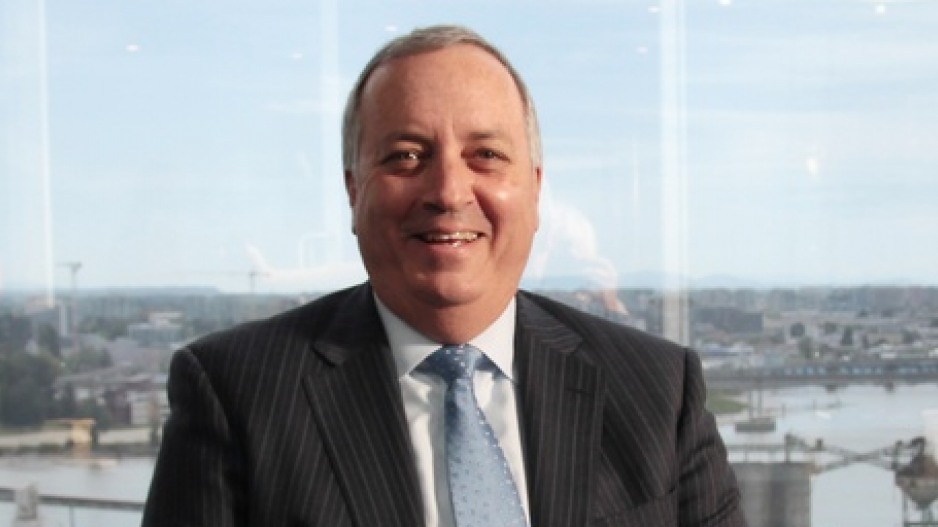When George Casey was flying planes as a teenager, he dreamed of becoming a commercial pilot. Not in the picture was a vision of himself as an aviation executive overseeing a US$4 billion airport renovation.
But by the mid-1980s, when Casey – now CEO of the Vantage Airport Group – was 23 and had completed a degree in aeronautics, he had realized that his passion was the business of aviation, not the hands-on mechanical task of flying planes.
That set him on course for what has been a 30-year career raising financing for, building and operating airports, and, in some cases, transferring airports to new owners.
Along the way, he gained experience with the business models of publicly owned and privately held airports.
Sometimes Vantage’s work involves terminal construction, but at other times it is simply recasting an airport’s retail and food and beverage operations.
The biggest airport contract of Casey’s life, however, closed June 1 after many years of work.
Vantage has a one-third equity stake in a tripartite consortium known as LaGuardia Gateway Partners (LGP), which was officially selected to renovate, extend and operate the central terminal of New York City’s LaGuardia Airport until 2050, as part of a long-term lease.
LGP will get an undisclosed management fee for its efforts, which will include building a walkway between its central terminal and another main terminal operated by Delta Air Lines.
The US$4 billion project is the largest public-private partnership (P3) in North America and the largest P3 in the history of the Port Authority of New York and New Jersey, which owns the airport.
“Aviation is fascinating for me but meeting people from different cultures is what is really fulfilling,” Casey said, explaining why he prefers steering the business of airports to piloting airliners.
He’s sitting on a couch in his Vancouver office at Airport Square near Marine Drive. Outside his office window, a steady stream of planes fly by as they prepare to land across the Fraser River, at Vancouver International Airport.
“I like setting up teams in different places and making significant change,” Casey said. “Seeing that change materialize through the workforces and having better facilities and services – that inspires me. I like doing things differently and looking for ways to deliver something that’s very important.”
Casey wants the travelling public to think of air travel not as a stressful experience, but rather as an opportunity for people to meet each other.
Changing the public’s negative perception of LaGuardia Airport will not be easy.
Vice-president Joe Biden famously said, in 2014, that it was like being in a “Third World country” to spend time in the facility.
“Getting that contract is the aviation equivalent of winning the Stanley Cup,” former Vancouver Airport Authority (VAA) CEO Larry Berg told Business in Vancouver.
“George builds strong relationships, and that ability contributes considerably to his success.”
Berg was part of the team that hired Casey, in 2001, to be vice-president of business development at Vantage’s predecessor, Vancouver Airport Services.

VAA had created that subsidiary in 1994 to sell its own management experience.
By the time Casey became president and CEO, in 2006, the company was known as Vantage.
VAA then sold its ownership stake in Vantage to Citi Infrastructure Investors in two tranches: first a 50% stake in 2008 and then the remainder in April.
Casey said that despite that sale, Vantage and VAA executives continue to share knowledge in what he called a mutually beneficial relationship.
It’s a helpful arrangement given that Vantage oversees nine airports, a number that fluctuates continually as the company adds and releases airports from its portfolio.
Vantage, for example, oversees
two airports in Cyprus and one in Montego Bay, Jamaica, that are expected to transfer to other owners once operating agreements expire.
Management agreements are in place in Moncton, New Brunswick, as well as in Nassau, Bahamas.
And longtime leases are in place in two B.C. airports (Kamloops and Fort St. John) and in Hamilton, Ontario.
The company is bidding for work to revamp commercial concessions at New York City’s John F. Kennedy International Airport’s Terminal 5 and Chicago Midway International Airport.
Casey’s first airport projects came after he graduated from San Jose State University in 1985 with a bachelor of science in aeronautics.
KPMG Peat Marwick hired Casey to work in its airport-consulting group, and he provided financial and economic consulting to airport owners in U.S. cities such as Denver, Orlando and Honolulu.
While that work focused on publicly run airports, a trend toward privatization was emerging toward the end of the 1980s. In 1990 Casey decided to broaden his work experience and move to what was then Price Waterhouse’s Washington, D.C.-based infrastructure and finance group.
“After five years working for public airports, the new job gave me a different perspective,” he said. “I thought that there just had to be different ways to run airports.”
Casey remembers that the managing partner at KPMG tried to get him to stay at that firm by saying that moving to Price Waterhouse would be a “fatal” mistake.
“‘This privatization is a trend that’s going to disappear, mark my words,’” Casey remembers the partner saying. “He was a great man but he was wrong.”
Two years later, Casey sought to broaden his experience even more and return to his home state of California.
Aerospace giant Lockheed Martin was branching into airport management and had a contract to build Terminal 3 at the Toronto Pearson International Airport.
Casey worked on that project as well as others, involving the acquisition and management of airports in Australia and the U.K. for the company that became known as AGI.
Before he joined Vantage, he had helped raise more than US$1.5 billion of investment capital for acquisitions and airport expansions.
His involvement in the construction, management and transfer of ownership of such a wide range of airports was something few had in 2001, Berg said.
“Back then, the industry was also smaller and a bit of a different one than the one that it is today,” he said. “Today it’s a large global industry while in 2001 it was more fledgling and there were fewer operators.
Current VAA CEO Craig Richmond worked for Casey at Vantage for seven years in four countries and at seven airports.
“He is easily the most experienced and expert airport transition manager I have ever met,” Richmond said.
Outside work, Casey spends time with his wife and two daughters.
“I really enjoy spending time with family and going to the Sunshine Coast,” he said. “We spend a lot of time up there boating, wakeboarding and water-skiing.” •




